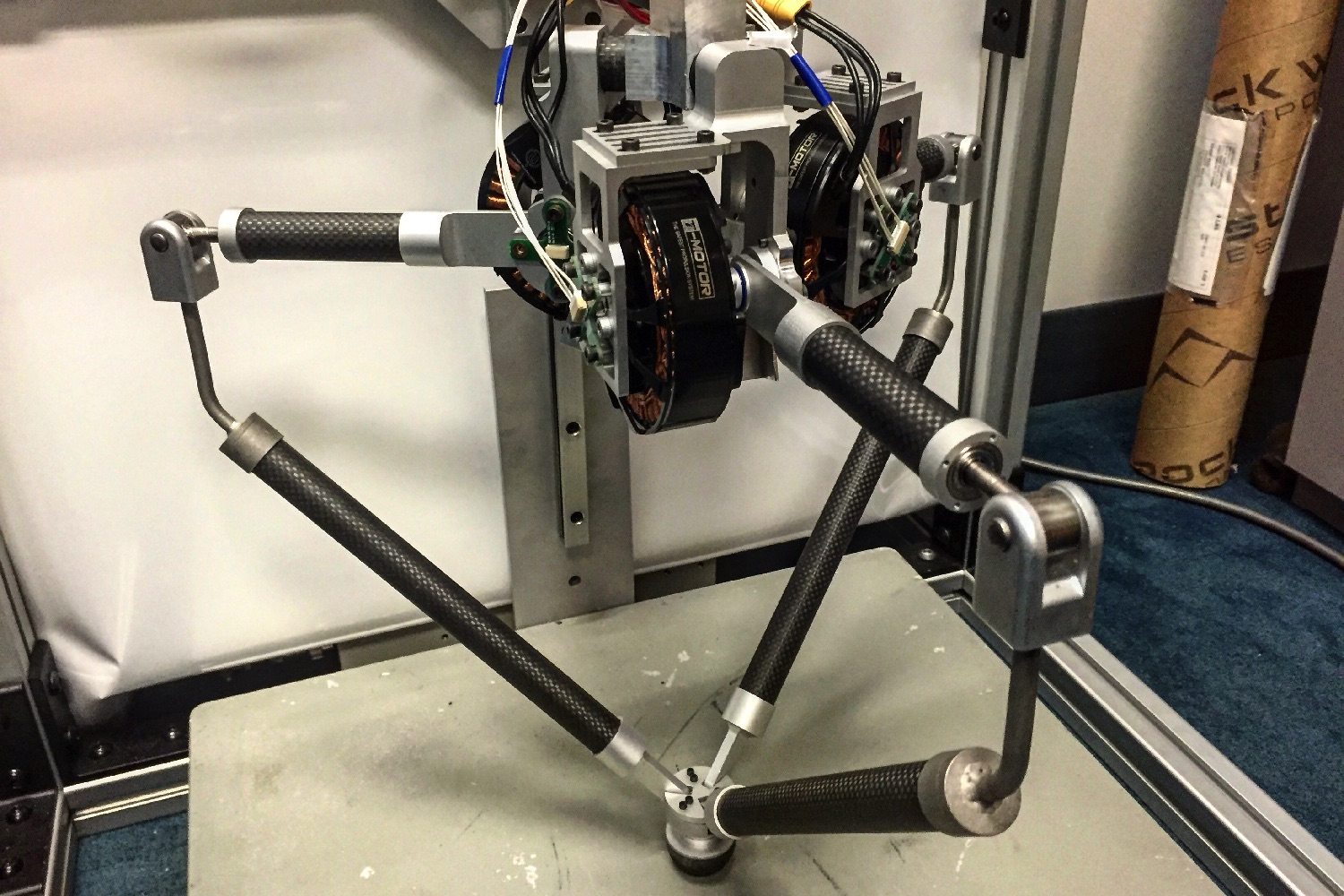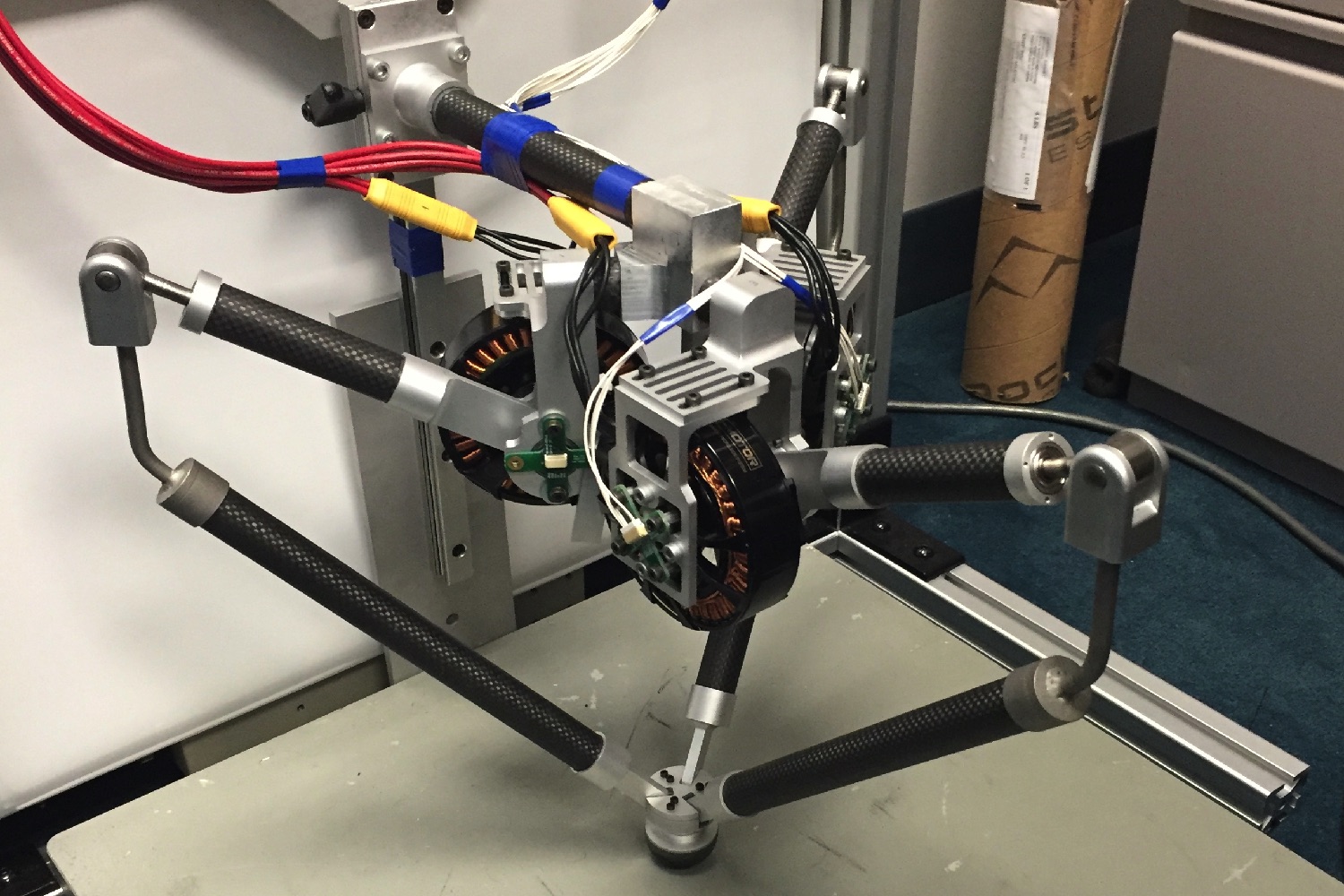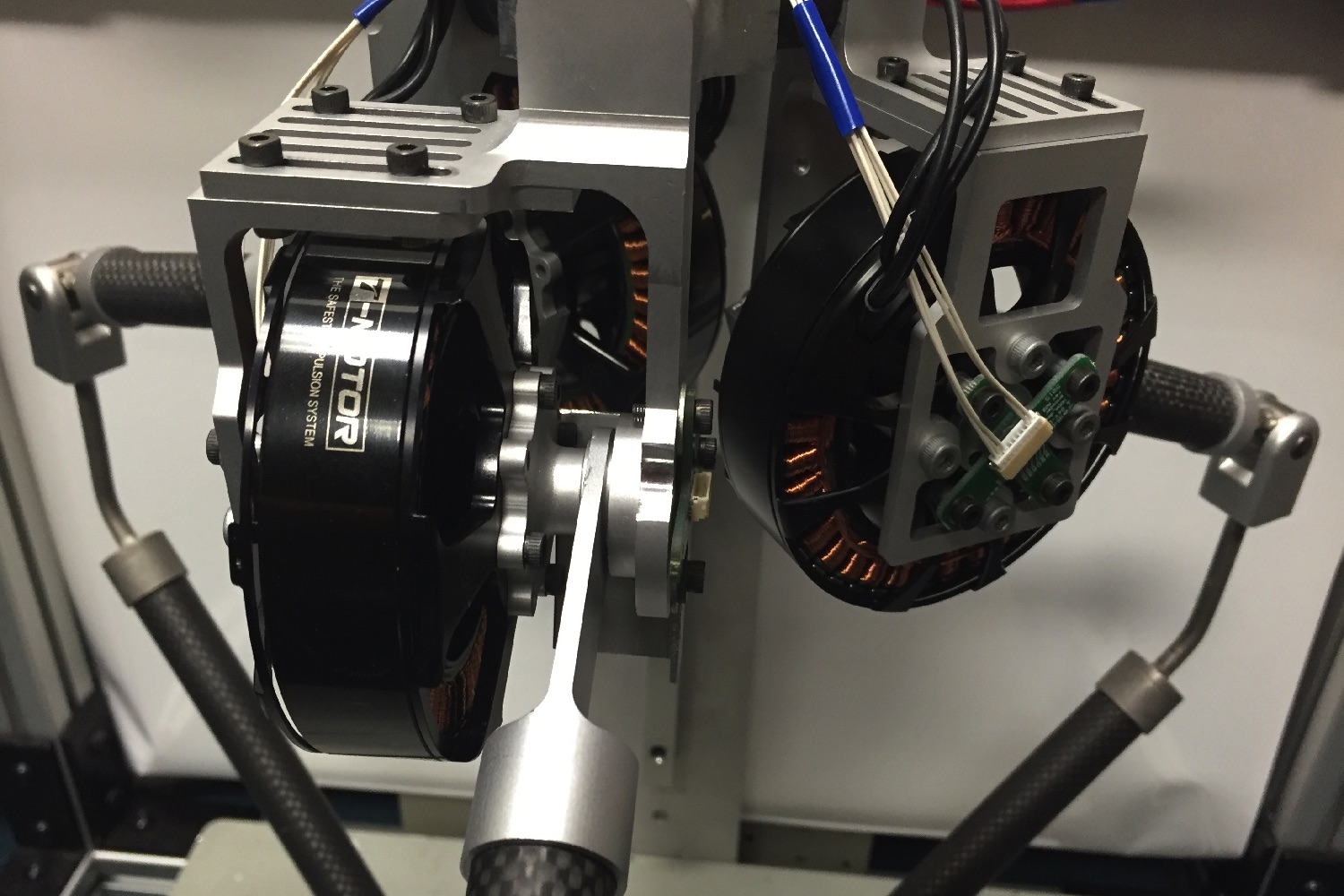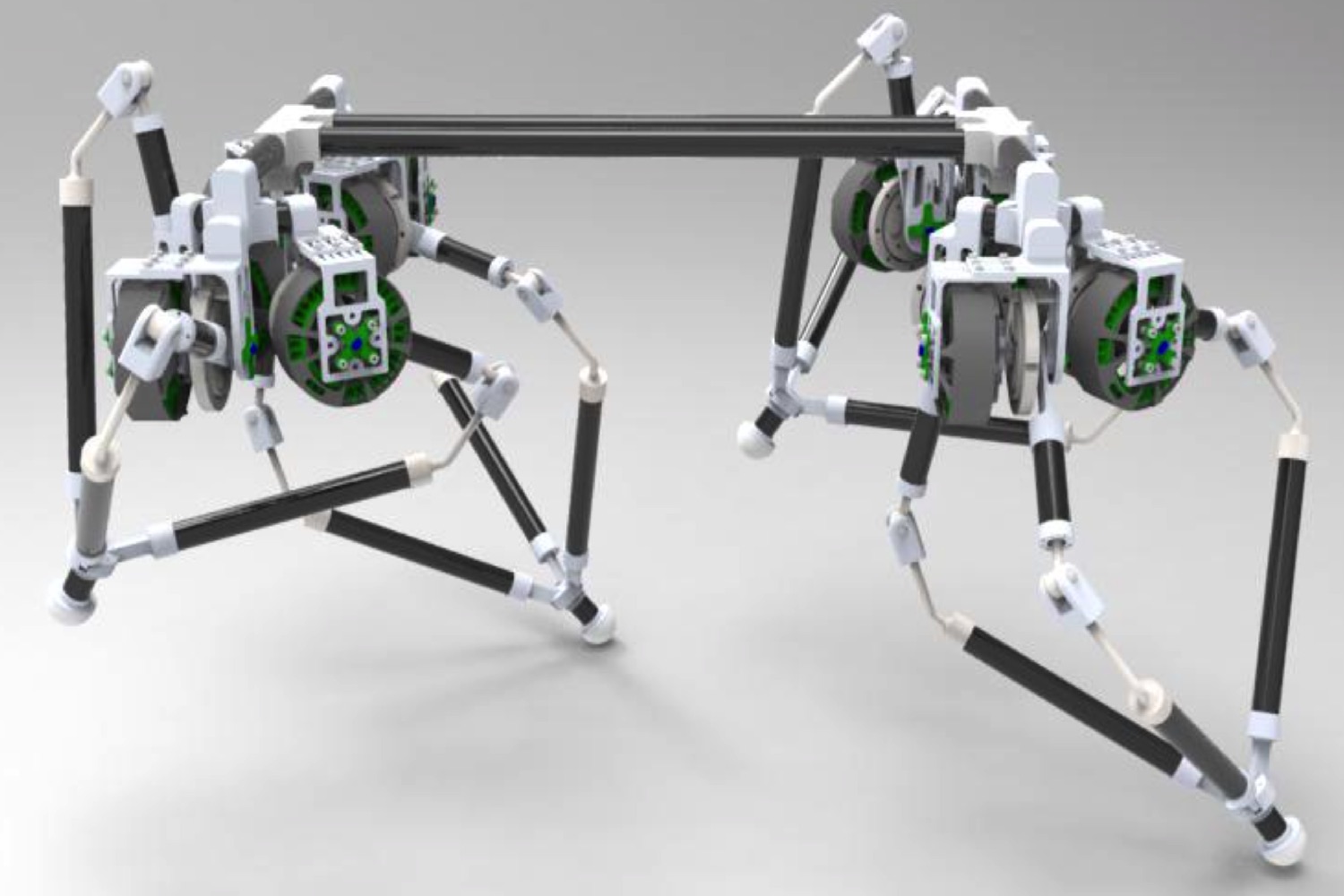That’s where robots like the ultra-springy GOAT robot leg come in. Developed by roboticist Simon Kalouche for his recent Carnegie Mellon master’s thesis, the GOAT robot doesn’t resemble a real-life goat leg, but takes inspiration from its namesake in one important way.
“The name GOAT stands for gearless, omni-directional, acceleration-vectoring, topology, and also pays tribute to the mountain goat who is capable of amazing jumping behaviors to traverse sheer cliffs and was an original inspiration for my work,” Kalouche told Digital Trends.
Kalouche said the GOAT was designed with the goal of achieving dynamic, high agility, omnidirectional jumping and running. “To achieve such performance, a legged robot must be powerful enough to exert large amounts of energy rapidly, while also being compliant to absorb the energy of impact during landing from a high jump,” he said.
GOAT’s impressive performance capabilities — which have it leaping up and down like a sugared-up kid on Christmas morning — are achieved by controlling the leg’s motors in a way that emulates the effect and behavior of a physical mechanical spring, only without actually requiring any springs.
This comes with numerous advantages. For example, using only software, the robot can vary its “virtual spring stiffness and dampening” in real -time: something that would be much more challenging (or even impossible) if you were dealing with an actual spring. The same is true of what is called the “force bandwidth of the system,” meaning the speed at which force can be exerted by the leg, which would be far more limited in the case of a physical spring.
“The future of this technology could be in extraterrestrial robots or terrestrial robots operating in environments and terrains that have very diverse topographies,” Kalouche concluded. “To be able to traverse a large set of terrains, legged robots offer enhanced mobility as opposed to wheeled [or] tracked machines, but legged machines require both statically stable locomotion as well as highly dynamic jumping [and] running behaviors to traverse such a wide set of structured and unstructured landscapes.”
GOAT, it seems, ticks all the right boxes. Coming soon to a sheer cliff face near you.
Editors' Recommendations
- Doctors share what it’s like to team up with a robot to fight the coronavirus
- Like the real thing, this robot ant colony is more than the sum of its parts







